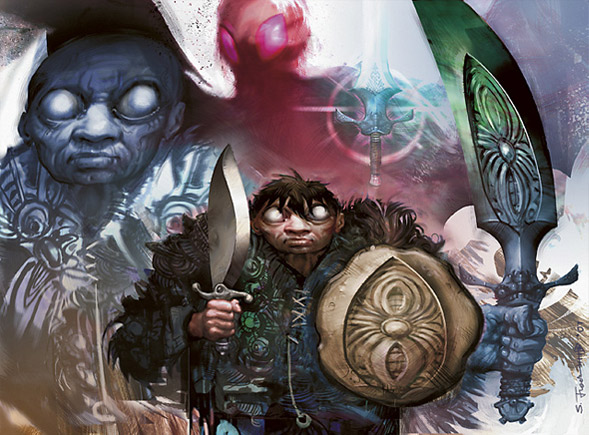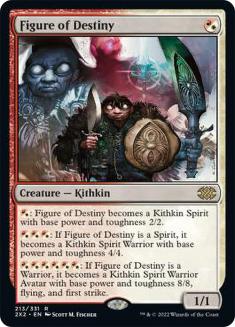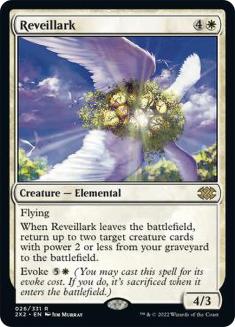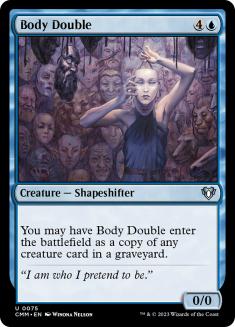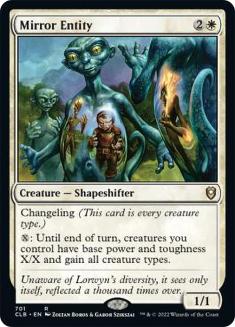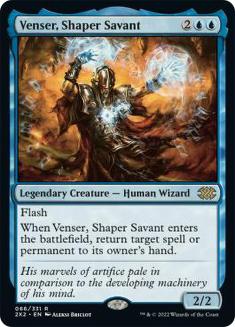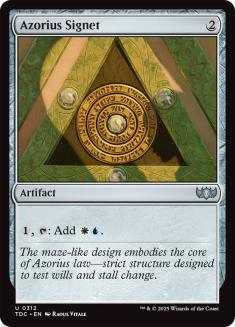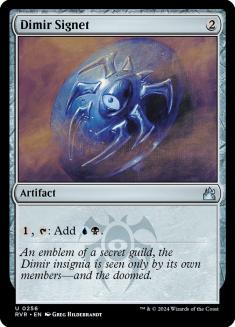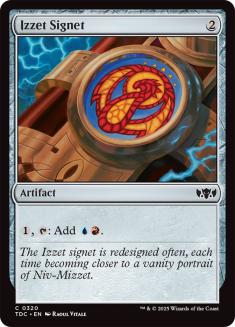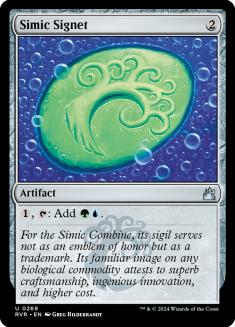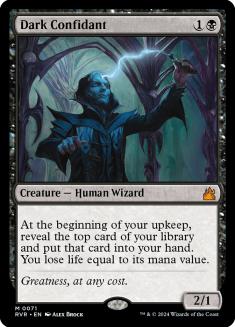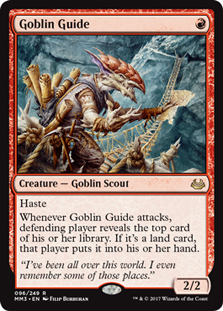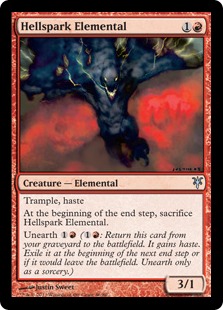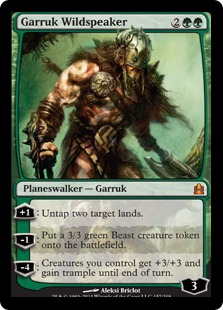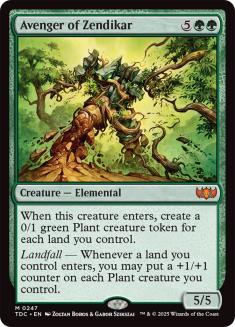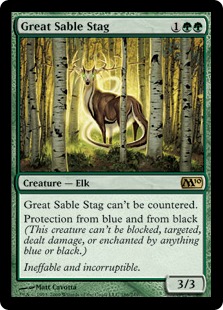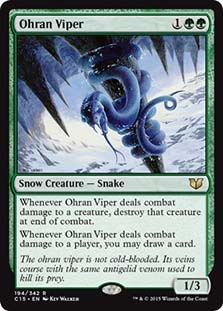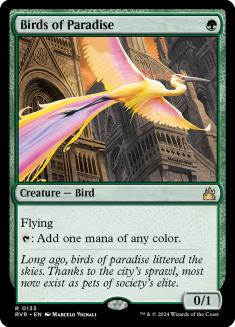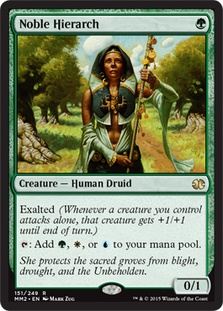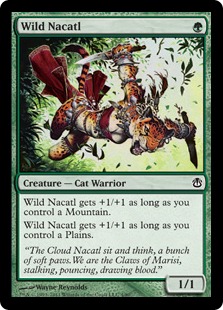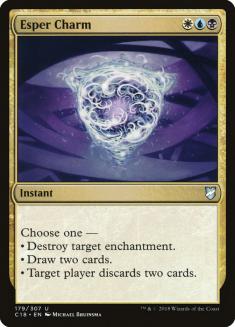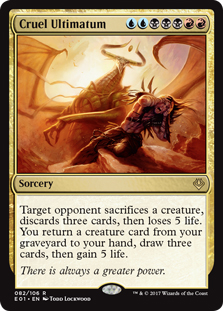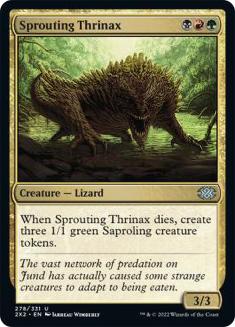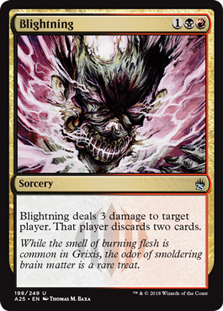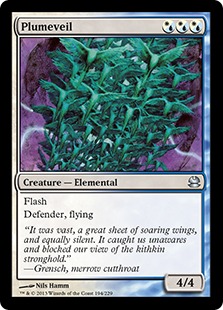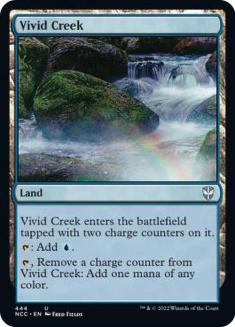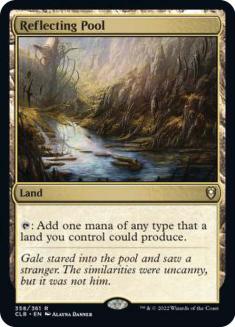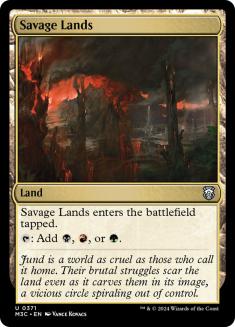I was a junior in college in 2010, and I was slowly figuring out what kind of person I wanted to be by process of elimination. Most of my free time was dedicated to playing Magic and improv comedy. People who knew me in these contexts wouldn’t necessarily know it, but I was anxious about absolutely everything. Fake it ’til you make it, or whatever. Rent was dirt cheap where I went to school, and I could barely afford it. A good tournament or show was at the top of a very short list of things that offered me any sense of fulfillment. Luckily for me, Magic was pretty incredible back then.
This week, I’m continuing the reveal of my Time Capsule Cube with the third module, which consists of cards from Ravnica through Rise of the Eldrazi. It was during this time that I really started to seriously pursue competitive Magic, and it could be the bias of how invested in the game I was at this time speaking, but this era is absolutely teeming with all-time great sets and cards. Just looking at the bookending sets, you have the origin of shocklands and a Booster Draft environment that had me drafting in paper three times a week.
My approach to Magic was heavily refined during this period, due in no small part to my friendship with Jens Erickson. Jens isn’t too well known, but he’s incredibly good at Magic. “Qualify for Worlds on rating” good. Almost every card in this module brings back memories of preparing for some tournament or another with Jens, as well as the memories of celebrating victories and commiserating over losses. I wasn’t an overly sentimental person back then, but I’m overjoyed that I was able to construct something so sentimental now.
With enemy fetchlands, allied creature duals, and the introduction of planeswalkers all falling in this module, it’s easy for me to sing its praises. If you don’t believe in love at first sight, you might change your mind after hitting this Cube Cobra link. Finally, a module with good mana-fixing! Notably, gold cards still had a way to go at this point, so I went with a slight color imbalance to favor cards that are exciting to play rather than just checking colored boxes. On that note, let’s get to the breakdown of the Cube by color!
White
The aggressive white options from this era featured more significant upgrades for Constructed Magic than Cube, but there are some great tools here either way. Elite Vanguard is just a strictly different Savannah Lions, but Figure of Destiny and Student of Warfare are incredibly significant for adding some scalable, cheap threats.
Double-pipped creatures continue to populate the two-mana slots, though the use of protection significantly scaled back at this time. Stoneforge Mystic might look a little odd without any especially powerful Equipment in this module, but I couldn’t convince myself to omit the card given its history of tournament success, as well as its humble origin of grabbing some dumpy Equipment when it first hit the scene. Loxodon Warhammer is certainly weaker than Sword of Feast and Famine, but it showed up. This also all just makes it so that Stoneforge Mystic scales in interesting ways when you combine this module with any of the others.
Day of Judgment takes over for Wrath of God in this era, which doesn’t change much. White spot removal gets some nice new hits in Path to Exile, Journey to Nowhere, Oblivion Ring, and Faith’s Fetters.
Azorius Control, Orzhov Tokens, Boros Aggro, Boros Midrange, Bant Mythic, and, if you can believe it, more than one Naya deck saw competitive success at this time, and you see cards supporting all of these archetypes featured here. Baneslayer Angel; Elspeth, Knight-Errant; and Gideon Jura all saw significant play as massively impactful curve-toppers. Things would change when Magic 2011 introduced the Titan cycle, but Captain of the Watch was allowed some time to shine before that happened.
Given that the card is fairly unremarkable in the digital Cubes these days, it might not be immediately obvious what a big deal Reveillark is in this module. In addition to just being a very good value card for creature decks, there’s also a somewhat convoluted combo that was a major player in Standard once upon a time.
The setup is having Reveillark or Body Double in your graveyard with Mirror Entity on the battlefield and Venser, Shaper Savant or Riftwing Cloudskate in either zone. You cast Body Double copying Reveillark or cast Reveillark if the Body Double is already in the graveyard, and then you put a bunch of “Mirror Entity for zero” activations on the stack. As you resolve these triggers, you’ll keep looping back Body Double to copy Reveillark as well as your bounce creature to return all of your opponent’s permanents to hand one by one. Thinking about this combo hurts my brain sometimes, so if I got things slightly wrong and/or this one is difficult to wrap your head around, you’re not alone. This won’t come up all that often in Cube, but it will come up some percentage of the time!
Blue
How many blue cards in this module aren’t still commonly played in Cubes today? Two? Three? You draw cards, you counter spells, you bounce stuff, you steal stuff, and you take the occasional extra turn. Things that are and have always been powerful. Psionic Blast breaks the mold somewhat, but some representation of the Timeshifted sheet and the quirkiness of Time Spiral block definitely adds to this module’s charm.
A notable element of the blue column is that it’s a bit longer on four-mana cards than I would typically like. This is due to the inclusion of only blue Signets in the Cube. Having all ten Signets would be very warping on the environment and not necessarily reflective of what saw play back then, but blue Signets specifically showed up quite a bit in Constructed. Signets will of course reward blue players by allowing them to cast their four-drops ahead of schedule, but this does cut both ways, as they will be hindered in games when they don’t produce a Signet.
Whether to include Pestermite and Splinter Twin was an interesting question, given that any redundancy on the combo would have to come from other modules. Similar to Stoneforge Mystic, these cards struck me as too significant to exclude entirely. The combo won’t come together all that often and each card is individually somewhat underwhelming, but there’s room for a bit of that sort of thing.
Faeries was one of the dominant decks of this era, but it’s an archetype that just doesn’t translate well to singleton Cubes. I would love it if Spellstutter Sprite and Mistbind Clique could slot in here somehow, but it’s just not in the cards.
Jace, the Mind Sculptor is among the most significant cards of this era, and it offers a lot of power to blue in conjunction with Cryptic Command. Jace is among the most powerful cards in this module, better than all as we’d say, but the abundance of aggressive decks and presence of Bloodbraid Elf are meaningful counters to the card.
Black
The black column in this Cube took a little more finesse to round out. Cards like Bitterblossom, Thoughtseize, Inquisition of Kozilek, and Damnation are unquestionable inclusions. Where I got hung up was around Dark Confidant.
Dark Confidant is awesome. Frankly, it doesn’t get enough respect in Cubes these days. The problem is that black is a bit heavy on other cards that cost life to use, and the mana curve for the black column isn’t the best at supporting Dark Confidant. Guul Draz Assassin, Bloodthrone Vampire, and Rakdos Guildmage weren’t exactly Constructed powerhouses, but including them to give Dark Confidant some cheap on-color threats to play with does a lot to tie everything together.
Having Terror, Doom Blade, and Terminate all in the same module is kind of a goofy spread of modestly better and worse two-mana options, but all three saw play while they were Standard-legal with these printings. The incredible Adam Rex art for the Tenth Edition printing of Terror is really all the more argument I have to make here.

My first deep run in a PTQ involved looping Eternal Witness with Profane Command in Extended, and Puppeteer Clique was a fine Constructed card that used to be huge for Cube and Commander alike. Tombstalker is more or less completely invalidated these days, but it was once a significant contender, even in Legacy. It delights me to give a home to these cards that are all oddballs and misfits by today’s standards.
Red
I love how much red decks were roughing it in this era. You had Goblin Guide and the return of Lightning Bolt, which were both awesome, but the supporting cast is lousy with cards that we would never touch today. Looking at a Hellspark Elemental and remembering being excited to play with the card puts a huge smile on my face.
Most of what red is up to here is aggressive, but there are some good removal spells and midrange options. Destroying lands and otherwise disrupting your opponent’s mana was a huge part of Shards of Alara Standard, and while Spreading Seas wasn’t a very justifiable Cube inclusion, Goblin Ruinblaster is a nice one.
I could try to wax poetic about the significance of Sudden Shock, Banefire, and Searing Blaze, but red is mostly straightforward and scrappy here, and the column easily stands on its own merits for me.
Green
Green continues to deliver on the “mana and stuff” front, but we see some big improvements on the “stuff” side of things. Garruk Wildspeaker has aged by far the best of the original cycle of planeswalkers, and it continues to be a very significant Cube card alongside Avenger of Zendikar and Acidic Slime today.
There were some interesting considerations when it came to three-drops for the green column. I initially entertained some stuff like Yavimaya Dryad, but green felt a little heavy on just making mana at that point. Great Sable Stag isn’t a card that you’d normally see in Cube, but it was just everywhere back then, largely as an attempted foil for Faeries. Ohran Viper realistically peaked during preview season, but it’s totally playable and does a great job of illuminating the evolution of the game’s design.
When it comes to the one-drops, there are some significant exclusions here. Llanowar Elves was in both Tenth Edition and Magic 2010, and Arbor Elf was printed in this era as well. I biased towards both uniqueness of effect and amount of play at the time, and on both of these metrics I favor the mana creatures that I selected.
It would be excessive to include too many more one-drops than this, and I also wanted to make sure to include Wild Nacatl. Once banned in Modern and claiming a World Championship in the hands of Andre Coimbra, I will hear no disrespect for the Cat. I also featured Wild Nacatl as a nod to Shards of Alara‘s three-color theme as the Naya member of a somewhat non-obvious “cycle” in the Cube, five cards that each represent one of the allied three-color pairs.
Gold
I’ve already touched on the Signets and the three-color cards, and most everything else here saw considerable Constructed play. Fulminator Mage toes the “Stone Rain” line, and hybrid cards take a considerable number of the total gold slots. I’ll reiterate that many of the actual gold cards from this era were more cool than powerful, and this column ends up a little light in favor of only featuring actually playable cards. On that note, there are some notable exclusions here.
Blightning was an essential part of Jund in Standard as well as a deck built entirely around cascading into Blightning. It just contributes much less to your average game of Cube than it did to your average game of Standard. Part of me wants to figure out a cut for it, just for how big of a deal the card was back then, but for now Esper Charm is the Mind Rot du jour.
I had Plumeveil in my original list and was kind of excited about it, but this excitement diminished more and more as I refined the list. I’m just not excited about Wall of Omens and Wall of Reverence, and cards that are only good for blocking bore me to tears. Perhaps I’m overly sympathetic to Keldon Marauders. All the same, my Cube, my rules.
There are also some cards higher on the curve like Broodmate Dragon which showed up a lot back then that are easy to disqualify on the grounds of their high mana costs. Six-mana cards get much better after this era, and I’d rather focus on things that each individual era did especially well for the draft experiences when multiple modules are combined. Featuring Sprouting Thrinax as the Jund card is more compelling for the modular Cube experience, in addition to being a very powerful card to pair with Bloodthrone Vampire as part of the “make sure Dark Confidant is good” part of this design.
Artifact
With good lands and a decent amount of gold cards, the artifact list ends up pretty lean. Really, it’s all just mana rocks and Equipment. We all know that mana rocks are good, but Adventuring Gear is probably not the most exciting card at a glance. I’m firm on Loxodon Warhammer and I wanted a second Equipment for Stoneforge Mystic. The long and short of it is that Adventuring Gear edges out a list of other unexciting options like Sigil of Distinction and Trusty Machete. Basilisk Collar was another consideration for the Cunning Sparkmage combo, but ultimately I would expect the card to have a lower rate of play.
Land
Shocklands, enemy fetchlands, and creature duals all speak for themselves. Running 30-ish duals has been the sweet spot for me for Twoberts, though the filterlands did have some competition for rounding out these slots. Vivid lands along with Reflecting Pool and trilands were heavily played in this era.
Five-color mana-fixing and lands that enter the battlefield tapped are both things that I don’t generally like for Cube. It’s easy enough to draft a strong manabase for a three-color deck with the lands I selected, and four- or five-color decks are possible with fetches and shocks in the spread. I don’t mind and even like greedy manabases being possible, but I dislike offering tools that are by far at their best in five-color shells. This configuration doesn’t do a great job of representing the Five-Color Control decks of the time, but supporting them would come at a significant cost to the Draft environment.
Tectonic Edge saw significant play in Standard, and Mutavault was an immediate Constructed staple, so it was easy to make room for them. It’s difficult to overstate how significant creature-lands were in Standard at this time, with Simon Goertzen’s Pro Tour-winning Jund deck going all the way up to 27 lands being a huge innovation at the time, facilitated largely by having mana sinks in the deck’s manabase.
Time Capsule
This Twobert is my personal favorite module of the Time Capsule Cube, offering many nostalgic notes as well as many great and well-balanced cards. There are three modules to go, though, and plenty more reminiscing to do from here.
Next week I’ll be going over what is hands-down my least-favorite module. I hope you like Dragon’s Maze and Avacyn Restored, because I don’t!

